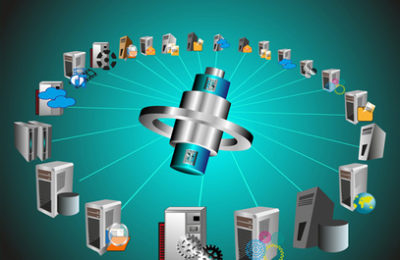How Will the Internet of Things Affect Your College or University?

Think of?approaching your home or car and seeing your door automatically unlock once it senses your smartwatch or key fob ?- or checking your smartphone to see if the laundry machines in your apartment complex are currently being used. These are some examples of the potential of the Internet of Things.
What is the Internet of Things?
If you’ve not read the Wikipedia article 🙂 the Internet of Things (IoT) is a network of ?smart? devices that are embedded with connectivity and sensors that allow them to collect and transfer data to other connected devices. Common devices that we think about when we contemplate networked “computers” are PCs, notebooks, smartphones and tablets, but there are countless other connected ?smart? devices that are a part of the Internet of Things and more are being created every day. These include things we think of, and things we don’t, but the message is that with today’s technology, almost anything can be “node” in the IoT if enabled by the right technology. I’ve recently installed two “connected” smoke alarms in my house; they are a part of the IoT. ?My smartphone receives alarms and “all-ok” messages in real-time, and has access to historical observations.?The implications are vast.
The Internet of Things supports device-to-device communication between nodes?(think of a “personal area network” where a smart watch communicates with a phone for updates) and also supports device-to-aggregator communications (think of sensors collecting data from coastal buoys and updating a database used in weather prediction). It uses both private networks and public networks (the “Cloud”) to securely carry data between participating nodes. Then,?applications (typically Cloud-based), allow you to access and transfer that data, giving you the flexibility to transform that data into information?anytime and anywhere, including on your campus. So, smart devices can communicate with other smart devices or can collect data, either over restricted networks or as encrypted “calls” over the public Internet.
How can the Internet of Things affect your college?
It Can Improve Energy Efficiency
Many colleges and universities?are burdened by limited fiscal resources, so enormous energy consumption mixed with inefficient energy use can often be taxing, cutting into funds that could be spent teaching students more effectively. Large institutions are are often beginning to leverage “facilities networks” to interconnect and control HVAC systems, but often the deployments are limited and not strategic.
However, the Internet of Things includes a rapidly growing?variety of devices and methods that can help significantly reduce energy costs. Institutions?are looking for ways to implement energy conservation programs that include building ubiquitous automation and accurate energy monitoring devices, allowing schools to pay only for what they need instead of having to cool or heat entire buildings. Pervasive technology enabled by the IoT is moving this from specialized systems to more open and interoperable (and affordable!) environments.
It Can Improve Quality of Education
The Internet of Things can play a major role in the education process, especially in regards to the quality of education that is provided to a student. It can have a pedagogical role (improved data or access to sensors and devices) or support role by expanding range of devices for content delivery and interaction possibilities.
In a support role, we have seen that in the last decade, online courses have allowed students to study and earn degrees on the internet while allowing them to retain the flexibility to fulfill important daily obligations (like taking care of their family or working a full-time job). Ubiquitous access to computing resources and networks, including the “connected supercomputer” you carry in your pocket, enables qualitatively improved tools and access to information. With smart displays (there’s the IoT again!), collaborative workspaces leveraging projected or “cast” content allow richly productive group sessions wherever students gather.?Over time, an enormous amount of data,?will?be collected and analyzed with the help of smart devices and systems, allowing universities to target student performance and to offer and help students find classes that would better suit their interests and learning styles.
It Will Require Attention to Security
The Internet of Things can be a bit overwhelming with possibilities…both good and bad. Ubiquitous connectivity to all kinds of devices is good, but that means that devices and systems have to learn to live in a world that is potentially hostile at each turn. They can’t rely on a “firewall” to protect them from things in the outside world, as they are in the outside world. If the firewall surrounds everything, then it surely will have bad actors inside any security perimeter. One part of this answer is de-perimeterization. This means that each device and system needs to be “hardened” to not trust, without verification, messages that it gets from another device or system. ?Too many devices and systems in the early Internet of Things are far too trusting about their neighbors. Security must mature quickly for the IoT to reach its potential.
The Internet of Things isn?t the only technology advancement that could help your institution.
The NIC, N2N Service?s cloud based integration platform, is another way your college or university?can use cutting-edge technology to reach greater heights of success and offer students a better educational experience. Leveraging the same advances in Cloud-based systems that support the myriad devices and deep pools of data from the IoT, the NIC is there to help you bring together the administrative and academic?data necessary to support an effective institution.
If you?re interested in learning about how the NIC can benefit your institution, contact N2N Services today.


